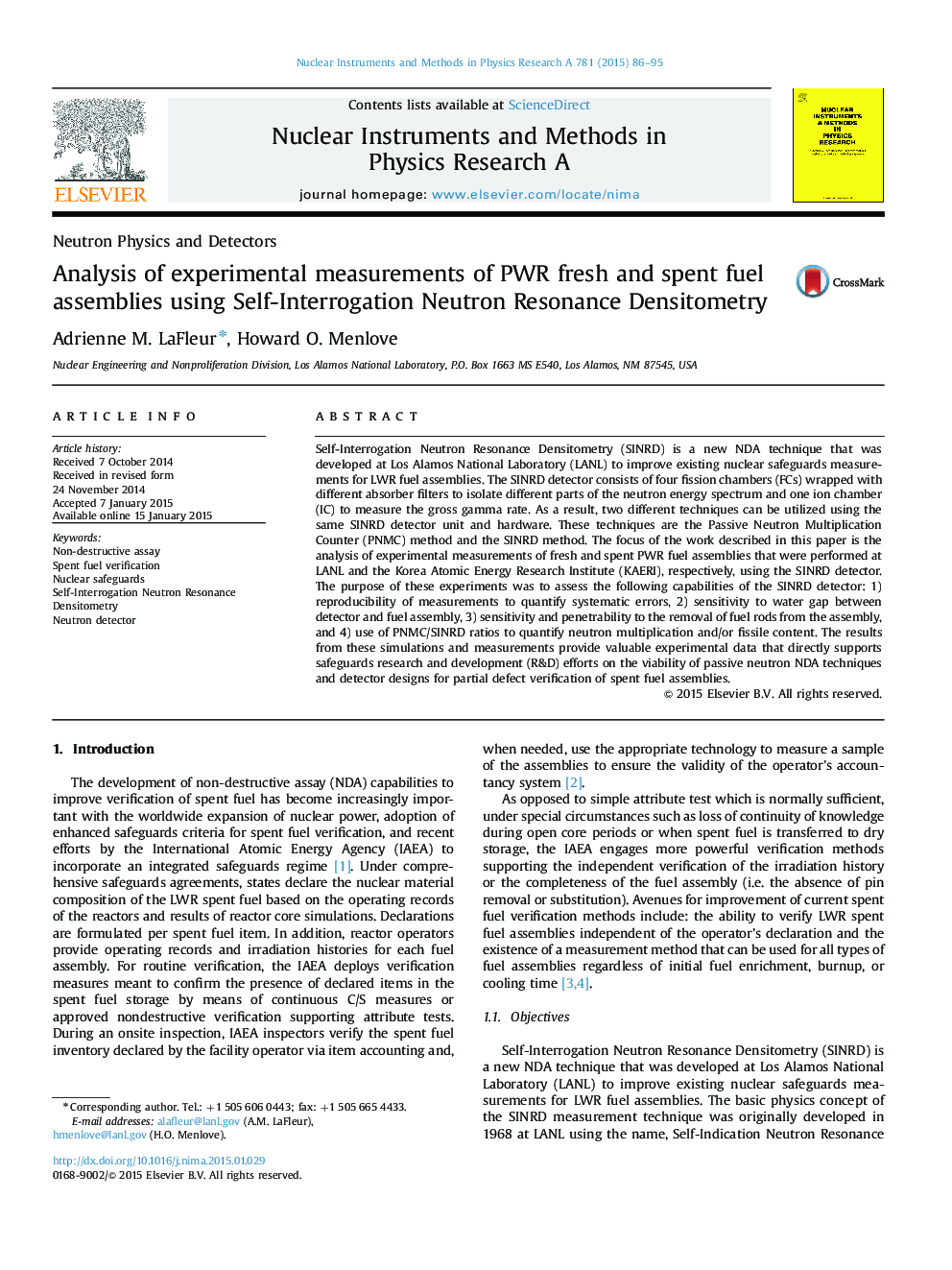| Article ID | Journal | Published Year | Pages | File Type |
|---|---|---|---|---|
| 1822531 | Nuclear Instruments and Methods in Physics Research Section A: Accelerators, Spectrometers, Detectors and Associated Equipment | 2015 | 10 Pages |
•Experimental measurements of PWR fresh and spent FAs were performed with SINRD.•Good agreement of MCNPX and measured results confirmed accuracy of SINRD model.•For fresh fuel, SINRD and PNMC ratios were not sensitive to water gaps of ≤5-mm.•Practical use of SINRD would be in Fork detector to reduce systematic uncertainties.
Self-Interrogation Neutron Resonance Densitometry (SINRD) is a new NDA technique that was developed at Los Alamos National Laboratory (LANL) to improve existing nuclear safeguards measurements for LWR fuel assemblies. The SINRD detector consists of four fission chambers (FCs) wrapped with different absorber filters to isolate different parts of the neutron energy spectrum and one ion chamber (IC) to measure the gross gamma rate. As a result, two different techniques can be utilized using the same SINRD detector unit and hardware. These techniques are the Passive Neutron Multiplication Counter (PNMC) method and the SINRD method. The focus of the work described in this paper is the analysis of experimental measurements of fresh and spent PWR fuel assemblies that were performed at LANL and the Korea Atomic Energy Research Institute (KAERI), respectively, using the SINRD detector. The purpose of these experiments was to assess the following capabilities of the SINRD detector: 1) reproducibility of measurements to quantify systematic errors, 2) sensitivity to water gap between detector and fuel assembly, 3) sensitivity and penetrability to the removal of fuel rods from the assembly, and 4) use of PNMC/SINRD ratios to quantify neutron multiplication and/or fissile content. The results from these simulations and measurements provide valuable experimental data that directly supports safeguards research and development (R&D) efforts on the viability of passive neutron NDA techniques and detector designs for partial defect verification of spent fuel assemblies.
